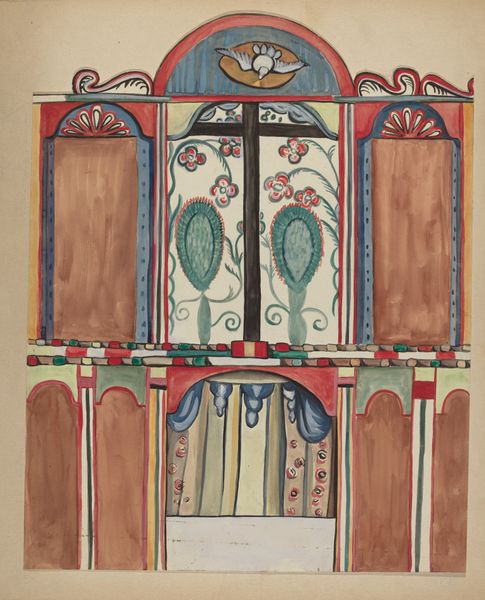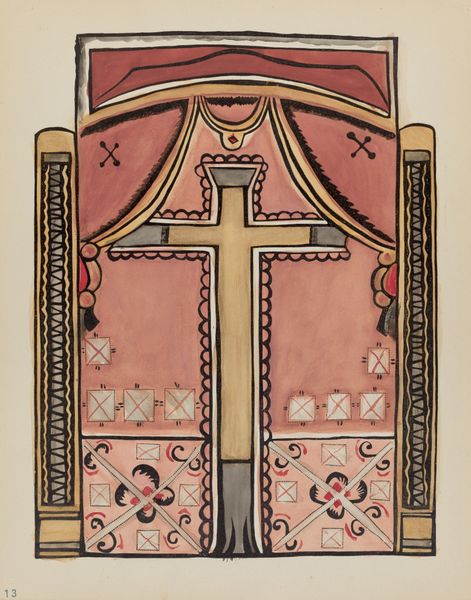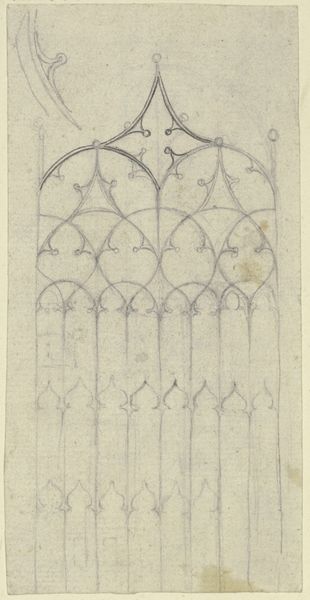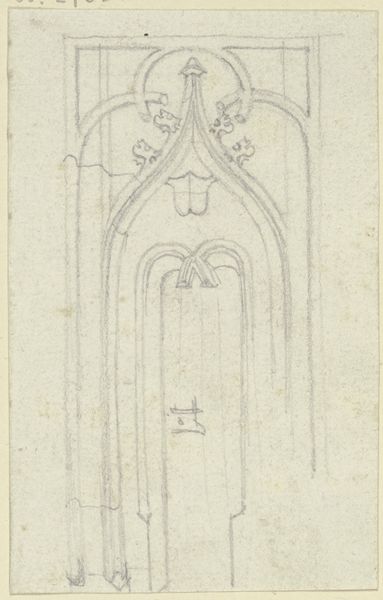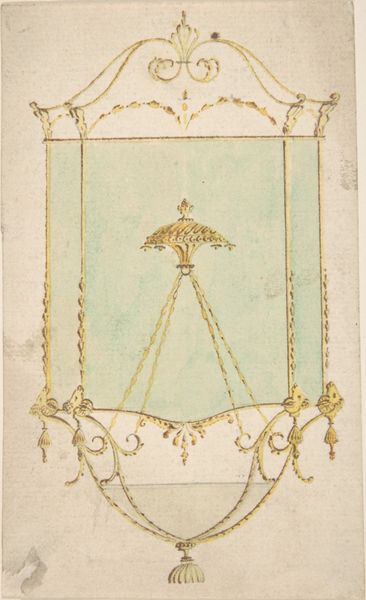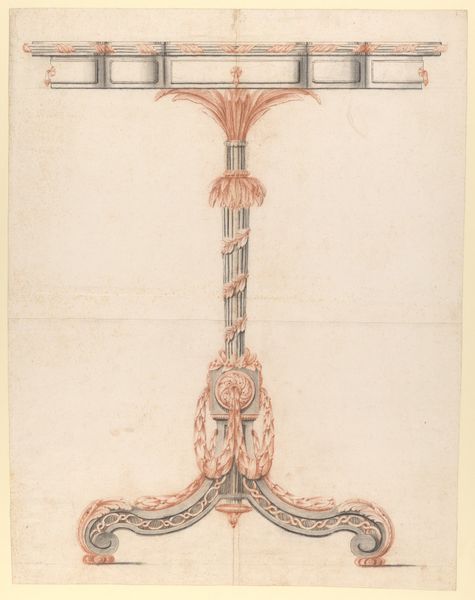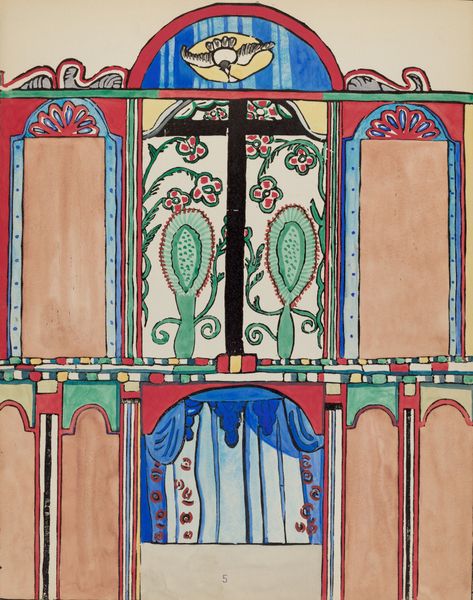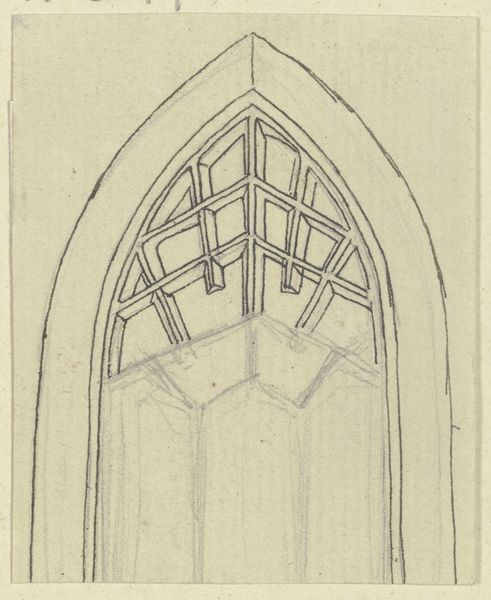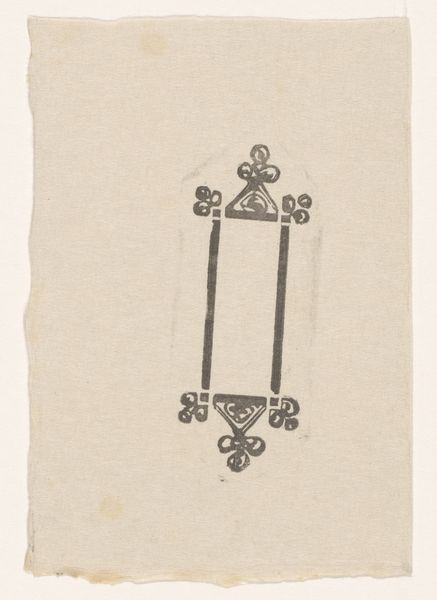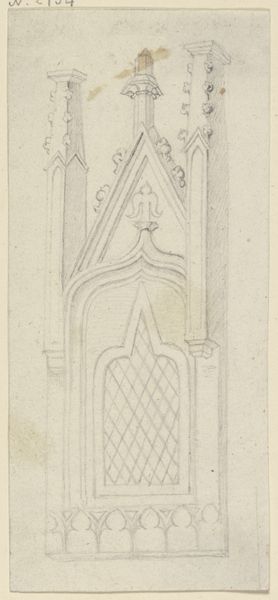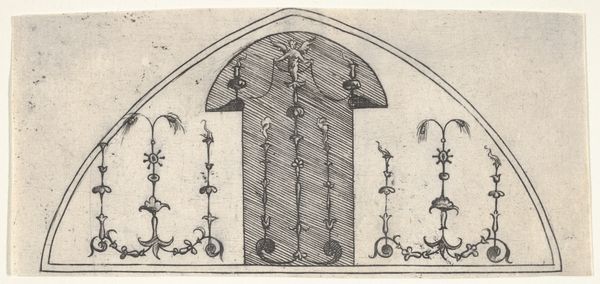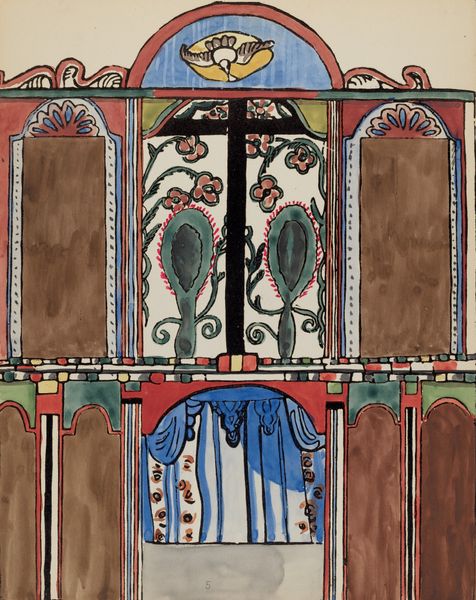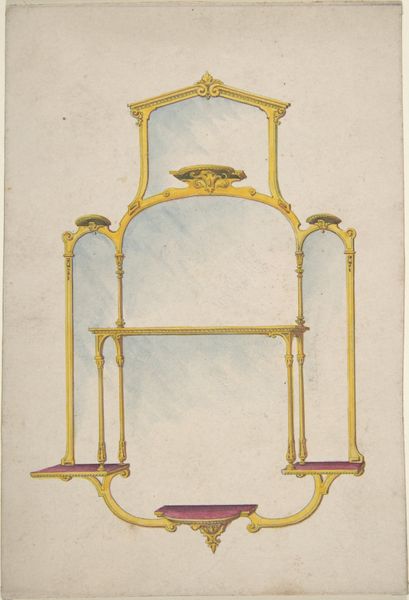
drawing, watercolor
#
drawing
#
blue ink drawing
#
water colours
#
figuration
#
watercolor
#
folk-art
#
geometric
#
line
#
watercolor
Dimensions: overall: 35.7 x 24.7 cm (14 1/16 x 9 3/4 in.)
Copyright: National Gallery of Art: CC0 1.0
Editor: This is Cornelius Christoffels' "Wall Painting" from around 1941, done with watercolors and ink. The drawing feels almost like an architectural study or a decorative sketch for a folk-art building. It's so simple in its geometry, yet so intriguing! What is your interpretation of the possible significance behind this image? Curator: It strikes me as quite intentional in its naive presentation. Considering it was made circa 1941, there's a possibility it's connected to discussions around regional identity and the rise of nationalistic sentiments. Was there a renewed interest in preserving or idealizing folk art and traditions, perhaps within museum settings or through government initiatives at the time? This almost feels like a proposition, an idea for a mural to create an origin narrative for a particular community. Editor: That's fascinating! I hadn’t considered the social implications. It makes me think about how art can become a tool for constructing a shared heritage. Do you see that reflected in the visual language of the artwork? Curator: Absolutely! Look at how the lines are deliberately simple, almost child-like. It’s not technically advanced or academic; this accessibility might've served the purpose of making it relatable to a wide audience, contributing to a constructed "collective memory" and its associated symbolic value. It is an art *for* the public, even if it never actually *was* public art. Editor: I see your point about the visual accessibility! So, beyond the surface charm, it could have been part of a bigger cultural narrative? Curator: Precisely! It highlights how even seemingly straightforward imagery can participate in shaping public opinion and collective memory. This demonstrates art’s cultural responsibility. Editor: Wow, I hadn't thought about it that way. Thanks for opening my eyes to this work. Now I see the power an artwork can hold beyond the image itself. Curator: Indeed. It is often said, the frame of art itself shapes our interpretation.
Comments
No comments
Be the first to comment and join the conversation on the ultimate creative platform.
